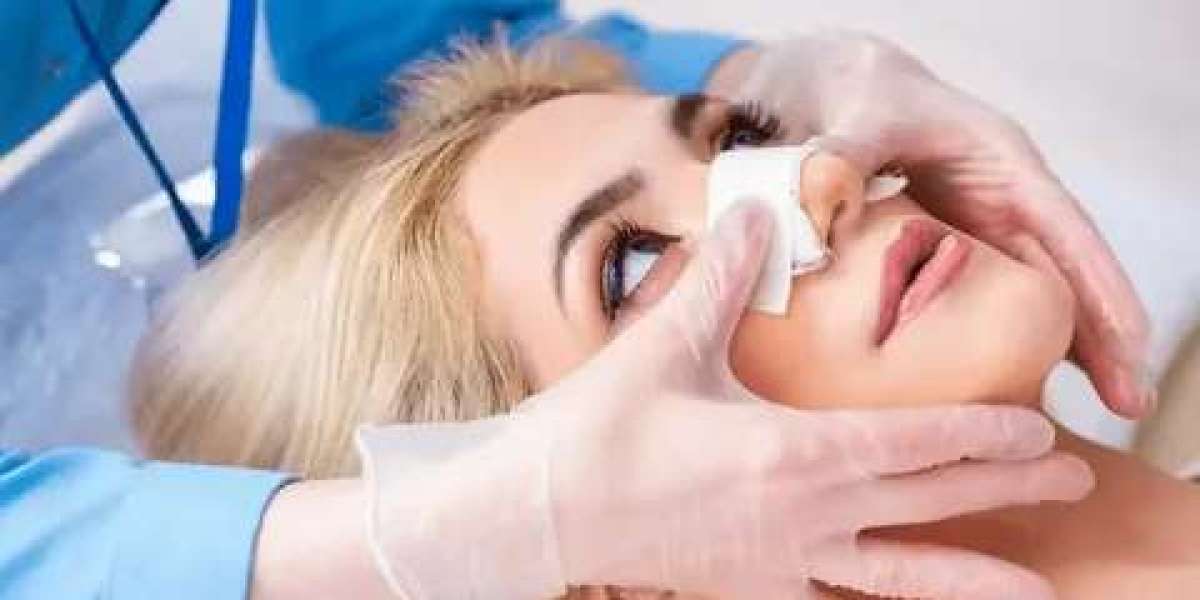In recent years, rhinoplasty techniques have undergone significant advancements, offering more refined and natural results. One of the most innovative methods gaining global attention is Preservation Rhinoplasty. This technique focuses on maintaining the nose's structural integrity while improving aesthetics and function. For patients considering Rhinoplasty in Islamabad, preservation rhinoplasty is emerging as a preferred approach due to its minimally invasive nature, quicker recovery, and superior long-term outcomes.
In this article, we’ll explore what preservation rhinoplasty is, how it differs from traditional techniques, its advantages, and what patients in Islamabad can expect from the procedure.
What Is Preservation Rhinoplasty?
Preservation rhinoplasty is a modern surgical approach that aims to reshape the nose while preserving its natural anatomical structures, particularly the nasal dorsum (the bridge of the nose) and the internal support mechanisms. Unlike traditional techniques that often involve removing cartilage and bone and then reconstructing the nose, preservation rhinoplasty works around and under these structures to achieve the desired aesthetic changes without unnecessary destruction.
The central philosophy of this technique is: “preserve what is good, correct what is necessary.”
Key Differences Between Traditional and Preservation Rhinoplasty
To understand the significance of this technique, it’s essential to compare it with traditional rhinoplasty:
1. Dorsal Preservation
Traditional: The dorsal hump is removed by cutting bone and cartilage, often leading to an open roof that must be reconstructed.
Preservation: The dorsal hump is lowered from below, preserving the natural dorsum and avoiding an open roof.
2. Septum Management
Traditional: Septal cartilage may be extensively resected.
Preservation: The septum is repositioned or minimally altered, keeping most of its structure intact.
3. Soft Tissue Treatment
Traditional: More extensive dissection of nasal soft tissues.
Preservation: Minimal tissue trauma leads to faster healing and fewer complications.
4. Overall Philosophy
Traditional: Destructive and reconstructive.
Preservation: Conservative and tissue-sparing.
Advantages of Preservation Rhinoplasty
1. More Natural-Looking Results
Since the dorsal aesthetic lines are maintained, the nose retains its natural shape and character, especially in profile view. This avoids the “surgical nose” look that can occur in overdone traditional rhinoplasties.
2. Less Swelling and Bruising
Due to the reduced trauma to tissues and blood vessels, patients typically experience less swelling, bruising, and discomfort post-operatively.
3. Faster Recovery
Preservation techniques often allow for a quicker recovery period, enabling patients to return to work or social activities sooner.
4. Lower Risk of Revision
By maintaining the natural support structures, there’s less risk of long-term complications such as collapse or nasal deformities, which are more common in aggressive traditional rhinoplasty.
5. Better Long-Term Stability
Because the underlying anatomy is left largely intact, the results are generally more stable over time and age naturally with the patient.
Ideal Candidates for Preservation Rhinoplasty
Preservation rhinoplasty is particularly suited for patients who:
Have a mild to moderate dorsal hump
Desire natural results without drastic changes
Have symmetrical nasal bones
Are undergoing rhinoplasty for the first time (primary rhinoplasty)
Want to improve breathing along with cosmetic changes
However, patients with significant trauma, previous rhinoplasty surgeries, or severely deviated noses may still benefit from traditional or hybrid approaches.
Preservation Rhinoplasty Techniques
There are several variations of the preservation method, each tailored to the individual’s anatomy and goals. These include:
1. Let-Down and Push-Down Techniques
Used to lower the nasal dorsum from underneath without removing the bridge, maintaining the natural contours.
2. High Septal Strip Technique
A portion of the septal cartilage is removed to allow dorsal lowering, but without disturbing the entire septal structure.
3. Minimal Tip Dissection
The nasal tip is reshaped with minimal disruption, often using sutures or small cartilage modifications.
4. Internal Approach (Closed Rhinoplasty)
Many preservation procedures can be performed without external incisions, leaving no visible scars.
Preservation Rhinoplasty in Islamabad
As awareness of modern surgical techniques grows, Preservation Rhinoplasty in Islamabad is gaining popularity among both patients and surgeons. Clinics and hospitals in Islamabad are increasingly offering this advanced procedure thanks to:
Experienced surgeons trained internationally in preservation techniques
State-of-the-art facilities with 3D imaging and digital simulation tools
Patient-centered care that emphasizes long-term outcomes and minimal downtime
A growing demand for natural and culturally appropriate results
Patients in Islamabad have access to consultations that include digital morphing and customized treatment plans, ensuring they understand what preservation rhinoplasty can offer them.
The Procedure: What to Expect
1. Initial Consultation
The process begins with a comprehensive consultation where the surgeon:
Assesses the nasal structure and breathing
Reviews patient goals and concerns
Performs imaging studies and simulations
Determines if the patient is a good candidate for preservation rhinoplasty
2. Surgical Planning
Each nose is unique, so a customized surgical plan is developed using tools like:
3D scans
High-resolution photography
Preoperative simulations
3. Surgery
Usually performed under general anesthesia
Duration: 2–3 hours depending on complexity
Minimal external incisions (often performed closed)
4. Post-Operative Care
Splints and bandages for 7–10 days
Swelling and bruising resolve faster than with traditional methods
Most patients return to daily life within 1–2 weeks
Full results visible after 3–6 months
Common Concerns and FAQs
Is preservation rhinoplasty more expensive?
It can be slightly more expensive due to the advanced techniques and surgical skill required, but the reduced need for revision surgery may make it more cost-effective in the long run.
Is it suitable for revision rhinoplasty?
Not always. Preservation techniques are generally better for primary rhinoplasty. Patients needing revision may require structural reconstruction.
Can it fix breathing issues?
Yes, especially when combined with functional rhinoplasty to address septal deviation or valve collapse.
Will my nose look too different?
One of the biggest advantages is that your nose will look like a refined version of itself, not entirely different.
Choosing the Right Surgeon in Islamabad
Finding a skilled surgeon for preservation rhinoplasty is crucial. Look for:
Board certification in plastic or ENT surgery
Training in preservation techniques
Before-and-after photos of previous patients
Transparent discussion of risks, benefits, and outcomes
Good communication—they should understand your goals and cultural preferences
Leading cosmetic clinics offering Rhinoplasty in Islamabad now include preservation techniques as a core part of their services. It’s advisable to request a consultation specifically about preservation if you’re interested in this method.
Conclusion
Preservation rhinoplasty represents a significant advancement in nasal surgery. By respecting and maintaining the nose’s original anatomy, it offers more natural, stable, and satisfying results. With its growing popularity, especially in centers of excellence for Rhinoplasty in Islamabad, this technique is now more accessible than ever for patients seeking subtle yet impactful facial enhancement.
Whether you're seeking functional improvement, cosmetic refinement, or both, preservation rhinoplasty could be the modern, sophisticated solution you're looking for.



